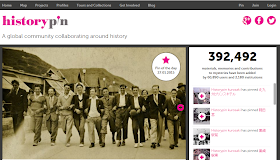The last few posts have focused on Primary Sources for a paper. Because I am such a nerd when it comes to research and I feel that the most accurate information is by far the best, I feel this topic is one to address over several posts. I continue with three new places to visit to locate primary sources.
 The Avalon Project: Yale Law has established a large database
dating back to the 4000 BC. Most of the
focus is historical and legal, but, it has a lot of materials that a classroom
teacher can access. You are going to
find more documents in the 1800s and beyond, but there is a collection of
material that can be used for a paper or project.
The Avalon Project: Yale Law has established a large database
dating back to the 4000 BC. Most of the
focus is historical and legal, but, it has a lot of materials that a classroom
teacher can access. You are going to
find more documents in the 1800s and beyond, but there is a collection of
material that can be used for a paper or project.
 Spartacus
Educational is a collection of documents about specific people and events
throughout history. There are specific events listed in the database, but you
can also connect to the Index and get a visual link to several topics,
including the World Wars, General American History, British History and
Biographies. This site is developed by a
Brit, so the text might be written with British flair, (for example, the
History of Football isn’t what we American’s know as football, but soccer) it does covers a lot of information.
Spartacus
Educational is a collection of documents about specific people and events
throughout history. There are specific events listed in the database, but you
can also connect to the Index and get a visual link to several topics,
including the World Wars, General American History, British History and
Biographies. This site is developed by a
Brit, so the text might be written with British flair, (for example, the
History of Football isn’t what we American’s know as football, but soccer) it does covers a lot of information.
Fordham
University has created a large database of full text sources that is
accessible free of charge. The
content includes a lot of information
about Western Civilization, Religion, Revolutions both foreign and domestic. When you find the topic of interest, you
click it and it takes you to a large list of links that relate. Some topics have hundreds of items available
to use for research. The information is
both internal on Fordham’s site as well as external on the web. Either way, it offers a lot of free
information for a paper or research project.
 America
in Class is a site
established by the National Humanities Council.
The focus is primarily literature and history, but it also offers
Professional Development. The site links
topics to the Common Core State Standards as well. The site focuses on America from its
beginnings to present time. The site also has a collection of secondary
sources, such as essays and literature written by scholars. It’s all free to use.
America
in Class is a site
established by the National Humanities Council.
The focus is primarily literature and history, but it also offers
Professional Development. The site links
topics to the Common Core State Standards as well. The site focuses on America from its
beginnings to present time. The site also has a collection of secondary
sources, such as essays and literature written by scholars. It’s all free to use. The Wilson
Center Digital Archive features an international collection of documents that
have been previously hidden from society. The browse themes and documents
features send readers to clippings, maps and images about the topics
available. Users see a map with pins in
specific areas. The themes section
leads users to many international topics.
The Wilson
Center Digital Archive features an international collection of documents that
have been previously hidden from society. The browse themes and documents
features send readers to clippings, maps and images about the topics
available. Users see a map with pins in
specific areas. The themes section
leads users to many international topics. 



